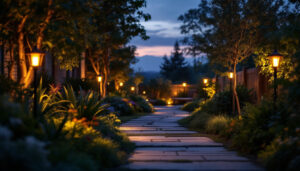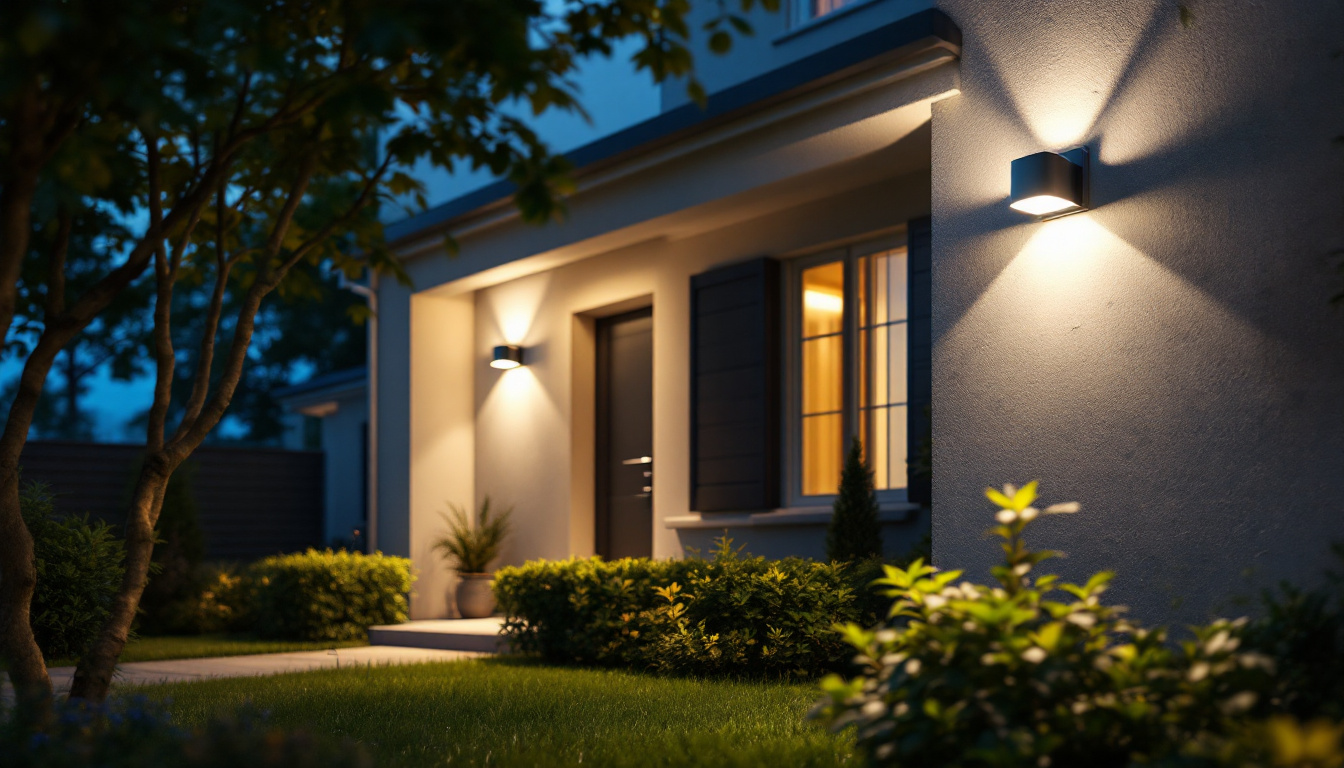

As the demand for energy-efficient and versatile lighting solutions continues to rise, LED strip lights have become a popular choice among homeowners and businesses alike. For lighting contractors, understanding the applications, benefits, and installation techniques of LED strip lights is essential. This guide aims to provide an in-depth look at using LED strips as ceiling lights, offering insights that can enhance your service offerings and satisfy your clients’ needs.
LED strip lights, also known as LED tape lights, are flexible circuit boards populated with light-emitting diodes (LEDs). These strips can be cut to size and are available in various colors and brightness levels, making them an adaptable solution for diverse lighting applications. Their slim profile allows for easy installation in tight spaces, which is particularly advantageous for ceiling lighting. With the ability to bend and conform to various shapes, LED strips can be seamlessly integrated into architectural features, enhancing the overall design of a room.
When selecting LED strips for ceiling applications, it’s crucial to understand the different types available. Generally, they can be categorized into two main types: standard and high-output strips. Standard strips are suitable for ambient lighting, while high-output strips are designed for task lighting or areas requiring higher illumination levels. For instance, high-output strips are ideal for kitchens or workspaces where bright, focused light is necessary for tasks such as cooking or crafting.
Additionally, LED strips come in various color temperatures, ranging from warm white to cool white, and even RGB options for color-changing effects. This variety allows contractors to tailor lighting solutions to meet specific client preferences and functional requirements. The ability to adjust color temperatures can significantly impact the mood of a space; warmer tones create a cozy atmosphere, while cooler tones can promote alertness and productivity. Furthermore, RGB strips can be programmed to change colors dynamically, making them perfect for entertainment areas or themed events.
There are several advantages to using LED strips as ceiling lights. Firstly, they are energy-efficient, consuming significantly less power than traditional incandescent or fluorescent lights. This not only reduces electricity bills but also contributes to a lower carbon footprint. The reduced heat output of LED strips also minimizes the need for additional cooling in warmer climates, further enhancing their efficiency.
Secondly, LED strips have a long lifespan, often lasting up to 50,000 hours or more. This longevity means less frequent replacements, which can save both time and money for clients in the long run. Additionally, their durability makes them resistant to shock and vibration, making them suitable for a variety of environments, including commercial spaces where foot traffic may be high.
Lastly, their versatility allows for creative lighting designs. Whether used for accent lighting, cove lighting, or even as primary light sources, LED strips can enhance the aesthetic appeal of any space. They can be installed in various configurations, such as along the edges of ceilings, behind furniture, or within architectural recesses, providing a dramatic effect that can transform ordinary spaces into extraordinary ones. Moreover, the ease of installation means that DIY enthusiasts can also experiment with LED strips, creating personalized lighting solutions that reflect their unique style and preferences.
Proper installation is key to maximizing the performance and longevity of LED strip lights. As a lighting contractor, understanding the installation process will enable you to deliver high-quality work that meets industry standards.
Before installation, it is essential to assess the space and determine the appropriate type and length of LED strip lights needed. Consider factors such as the ceiling height, the purpose of the lighting, and any existing fixtures that may influence the design.
Additionally, ensure that the power supply is adequate for the chosen LED strips. Most LED strips require a specific voltage, typically 12V or 24V, and selecting the correct power supply is crucial to avoid flickering or damage to the lights. It’s also wise to consider the total wattage of the LED strips to ensure that the power supply can handle the load without overheating, which can lead to premature failure.
Another important aspect of planning is to think about the color temperature and brightness of the LED strips. Different areas may benefit from different lighting effects; for example, a warm white light is often ideal for creating a cozy atmosphere in living spaces, while a cooler white light can enhance focus and productivity in workspaces. Understanding these nuances will help you provide tailored solutions that meet your clients’ needs.
The installation process for LED strip lights generally involves several key steps:
After the installation, it’s beneficial to educate clients on how to maintain their LED strip lights. Regular cleaning with a soft cloth can help avoid dust buildup, which can diminish brightness over time. Additionally, if the lights are installed in areas prone to moisture, such as kitchens or bathrooms, consider using waterproof LED strips to ensure durability and longevity. This proactive approach not only enhances the lifespan of the lights but also keeps them looking their best, ensuring that clients are satisfied with their investment.
Furthermore, it’s important to discuss the potential for future upgrades or modifications. LED technology is continually evolving, and clients may want to incorporate smart lighting solutions that allow for remote control or integration with home automation systems. By being knowledgeable about these options, you can position yourself as a valuable resource for your clients, helping them to create a versatile and modern lighting environment that can adapt to their changing needs.
When designing a lighting scheme with LED strips, several factors must be taken into account to achieve the desired effect. Proper design not only enhances the visual appeal of a space but also ensures functionality.
A layered lighting approach combines ambient, task, and accent lighting to create a well-balanced environment. LED strips can effectively serve in all three roles. For example, they can be installed in coves or along the edges of ceilings to provide ambient light, while brighter strips can be used above workspaces for task lighting.
Incorporating dimmers can also enhance the versatility of the lighting scheme, allowing clients to adjust the brightness according to their needs and preferences.
The color temperature of LED strips can significantly influence the mood of a space. Warm white light (2700K-3000K) creates a cozy and inviting atmosphere, making it ideal for living rooms and bedrooms. In contrast, cooler white light (4000K-5000K) is better suited for workspaces, kitchens, and bathrooms where clarity and focus are essential.
For dynamic environments, RGB LED strips can be utilized to change colors according to the occasion or time of day, providing a unique and customizable lighting experience.
Although LED strips are known for their longevity, regular maintenance is still important to ensure optimal performance. As a contractor, educating clients about basic maintenance practices can enhance their satisfaction and prolong the life of the installation.
Dust and debris can accumulate on LED strips, affecting their brightness and overall performance. Regular cleaning with a soft, dry cloth can help maintain their appearance and functionality. For more stubborn grime, a damp cloth with mild soap can be used, but care should be taken to avoid moisture getting into the electrical components.
Occasionally, LED strips may experience issues such as flickering, dimming, or complete failure. Common causes include insufficient power supply, poor connections, or damaged strips. Troubleshooting these problems involves checking the power supply, ensuring all connections are secure, and inspecting the strip for any visible damage.
If a section of the strip is not lighting up, it may be necessary to replace that segment or the entire strip, depending on the extent of the damage.
Beyond traditional ceiling lighting, LED strips offer innovative applications that can elevate the design and functionality of various spaces. Understanding these applications can help contractors provide comprehensive lighting solutions to their clients.
LED strips are perfect for accent lighting, highlighting architectural features, artwork, or decorative elements within a space. By strategically placing strips in coves, behind furniture, or along shelves, contractors can create stunning visual effects that enhance the overall aesthetic.
Additionally, using programmable RGB strips allows for dynamic color changes that can set the mood for different occasions, making them an excellent choice for entertainment areas or event spaces.
LED strips are not limited to indoor applications; they can also be used outdoors to illuminate patios, decks, and walkways. Weather-resistant LED strips are available, ensuring durability and functionality in various weather conditions. Proper installation and sealing of connections are essential to prevent moisture damage.
Outdoor lighting can enhance safety and security while creating an inviting atmosphere for outdoor gatherings and activities.
LED strip lights have revolutionized the way lighting contractors approach ceiling lighting solutions. Their versatility, energy efficiency, and innovative design capabilities make them an invaluable tool in any contractor’s arsenal. By understanding the various types, installation techniques, design considerations, and maintenance practices, contractors can deliver exceptional lighting solutions that meet the evolving needs of their clients.
As the lighting industry continues to evolve, staying informed about the latest trends and technologies will ensure that contractors remain competitive and can provide the best possible service. Embracing LED strip lights as a primary lighting solution can lead to satisfied clients and successful projects.
Ready to elevate your lighting projects with the efficiency and innovation of LED strip lights? Look no further than LumenWholesale for all your lighting needs. Our extensive selection of spec-grade lighting products is designed to meet the highest industry standards, ensuring you deliver exceptional results to your clients. With unbeatable wholesale prices and the convenience of free shipping on bulk orders, you can trust LumenWholesale to provide premium lighting solutions that combine quality, affordability, and hassle-free service. Discover the best value in wholesale lighting and make your next project shine by visiting Wholesale Lighting at the Best Value.

Discover effective strategies for training your team in lighting with “Plug In With Switch.” This article delves into innovative techniques and tools to enhance your team’s skills, ensuring they are well-equipped to illuminate any project with expertise and creativity..

Discover the hidden pitfalls of purchasing cylinder lights in bulk from local distributors.

Discover how LED outdoor security light bulbs are transforming projects for lighting contractors with real-world success stories.

Explore the pros and cons of solar moving lights versus traditional alternatives in this insightful guide for lighting contractors.
Get notified when NEW deals are released.
Optimize your budget with wholesale discounts.
Only top-quality, specification-grade lighting products.
No additional costs at checkout - what you see is what you pay.
We understand the unique needs of contractors.